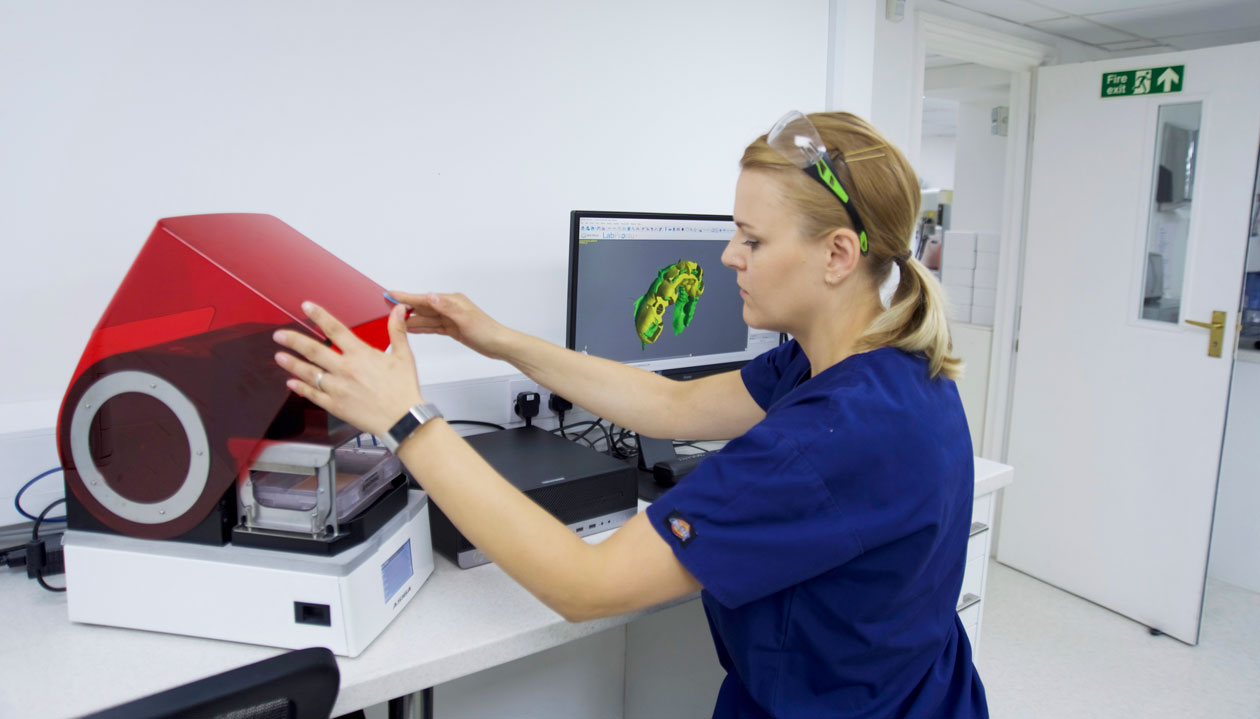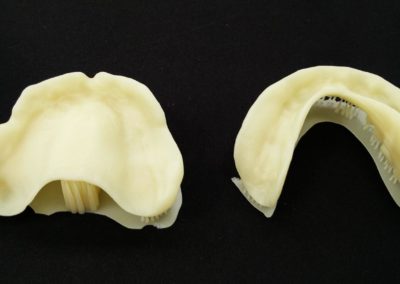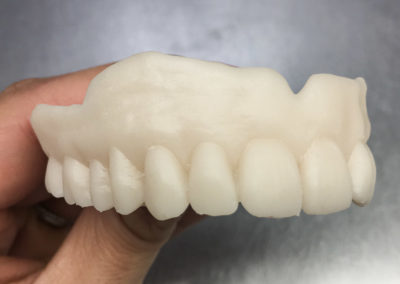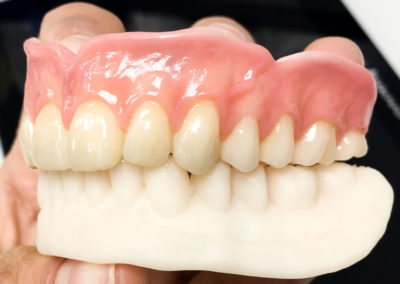Case study by Lola Welch
A study on digital dentures
Case introduction
This case was carried out as a way of investigating the feasibility of different digital workflows for fabricating dentures. Various workflows are being introduced as 3D printers, milling systems and 3D printable resins develop.
Most people will be aware that amongst the alternatives to traditional workflows, the digital revolution brings possibilities for milling and printing. For the fabrication of Dentures these are largely based around having two components, the arch of teeth in one material, bonded to another material which forms the Denture Base. Prior to that manufacturing stage there are various software packages that can be used to design those components.
Currently amongst other considerations, production costs vary widely depending on milling or 3D printing. On the 3D printing side for prosthetics, it’s possible to print models, custom trays, baseplates, bite registration items, try in etc., all of which can be easily modified or reproduced once the files are created.
Background
The photographs and the work in the photographs were all fabricated by Lola Welch, Senior Prosthetics Technician from Ceramic Designs Laboratory. Lola graduated in 2004 (BSc Medical University of Warsaw). Soon afterward she joined a general practice in London as an in-house Dental Technician, and then she Ceramic Designs in 2016. Her main areas of interest are Implantology – involving all aspects from same-day restorations to a full arch, implant-supported composite bridges, in this multidisciplinary laboratory. Lola has already made a name for herself in this field, due to her technical skills combined with her artistry. Lola was very interested to see what could be achieved by taking an approach where the entire prosthesis was printed from just one 3D Printer Resin, which was then coloured with composite. The photographs speak for themselves in regards to aesthetics.

Outline of the process
“After printing was completed in our incredible Asiga Max 385 UV 3D Printer, I firstly removed the printing supports. As these supports were very thin, they easily snapped off, leaving only small rough points. After tidying them up with a fine acrylic burr, I started my anterior teeth cutback for enamel (13 to 23) and gum customisation of the labial and buccal flanges. The dentures were then cleaned and the adjusted surfaces were sandblasted and primed for the application of composite. I then proceeded with painting on the internal teeth staining and after that applied the enamel layer of composite. On the posterior sections (which were not reduced for enamel) I used stains externally. Once I was happy with the finished appearance of the teeth, I proceeded with applying pink composite. I’ve been working on “pink aesthetics” for many years and I’m always trying to improve my methods, this is a technique I’ve recently learned on a course.
Like with the teeth, the intense colours (of flowable composites) were applied directly onto the denture and then covered with a layer of a natural pink shade paste. All the festooning and texture were applied prior to light curing and the final gum work did not require any trimming. After the full curing process I sealed the composite build-up with a varnish. To customise this denture I’ve used various materials, composites from Shottlander, Vita and AnaxDent. The glaze that I used was Optiglaze from GC.
I did spend about 2.5 hours customising this denture however, this time could be significantly reduced if I had not cut back for enamel and used only external teeth characterisation, which I believe would still provide a very successful aesthetics result”.
Conclusion
This was an interesting exercise and leads to many future possibilities as materials develop, you could say that with this approach it could potentially be possible to 3D print dentures all in just one resin material and then colour just the gum work, which could meet the challenges of the economic end of the market. Conversely the same 3D printed resin denture could be further characterised to individual shade prescriptions, to meet the requirements of more cosmetically demanding patients. It will be interesting to see how things develop, as manufacturers work closely to develop their systems.
Let's work together


















